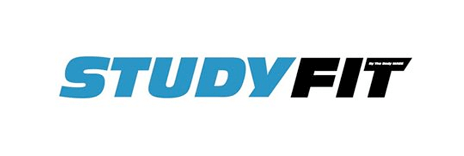Choice of HIIT training: Training hard or hardly training?

Summer is coming; its time to up the training, high intensity is your poison of choice. If you are planning on doing HIIT training you are probably in one of two camps:
- Just turn up and sweat until you can’t sweat no more
- You are a bit lost and end up plodding along on the treadmill or bike doing a sort of high intensity but not actually monitoring your intensity at all.
If you are one of these two people, fear not. 180 Strength are here to guide you through the minefield that is HIIT training.
What is HIIT?
High-intensity interval training (HIIT) has rose in popularity in the past decade due to its relatively simple protocol, short time duration and high intensity. HIIT alternates between high intensity and low intensity and can span across all energy systems depending on your protocol. This definition is pretty broad in itself, and can mean that a lot of people end up getting confused. So lets look at how to build a HIIT program.
Building your protocol
- Have a goal in mind: This is probably the one bit that people miss in there training, especially when it comes to your high intensity work. Try and progress your sessions week on week. Too many people fall into the trap of making things harder but with no purpose, or doing the same high intensity sessions for months on end. Either way you are most likely to be leaving some progress at home.
- How to progress your HIIT training:
- Work duration – You can measure this as either time or the amount of reps you do. Shorter and harder is better for power, where longer will build endurance. So if power and strength is your goal increase the load as a progression but keep the rest times longer. When endurance based try increasing the reps or time under tension.
- Rest duration – More rest again is power based, less will help build cardio. Short rest times will mean each set will need to be less intense but overall the intensity is there. Longer rests you’d expect your working time to be super demanding.
- Intensity – Use a scale of 1-10 for your working interval. You want the interval to be hard but also consistent to show improvement. For example if you are at a 9/10 at the end of the workout after week 1 then as you progress the sessions in difficulty you are expecting it to stay at a 8 to 9 out of 10 week on week. That way you can monitor progression. If your difficulty drops below an 8 out of 10 you need to progression more aggressively next time.
- Volume – If you jump in at the deep end and you can’t swim you’re probably going to drown. Start with low volume (amounts of sets) in week 1 and build up over the weeks.
| Example power based 4-week HIIT session | |||
| Week 1 – 6kg DB each hand*
5 strict press 5 thrusters 5 lunges each leg 20 push press 2m rest
|
Week 2 – 6kg DB each hand*
10 Strict press 10 thrusters 10 lunges each leg 20 push press 2m rest
|
Week 3 – 8kg DB each hand*
5 strict press 5 thrusters 5 lunges each leg 20 push press 2m rest
|
Week 4 – 8kg DB each hand*
10 strict press 10 thrusters 10 lunges each leg 20 push press 2m rest
|
|
*Weights are there to show progression and not set in stone for every individual
|
|||
| Example fat loss/endurance based 4-week HIIT session | |||
| Week 1
500m row 300m run 10 burpees 90sec rest 3 rounds
|
Week 2
500m row 300m run 10 burpees 90sec rest 5 rounds
|
Week 3
500m row 300m run 10 burpees 45sec rest 3 rounds
|
Week 4
500m row 300m run 10 burpees 45sec rest 5 rounds
|
| Increase in rounds and decrease in rest time shows progression | |||
Complimenting your HIIT
HIIT can be used in your training for fat loss, muscle mass gain, increased cardiovascular health, fun, a challenge blah blah blah. The list goes on. Matching your food intake with your goals and training is only going to speed up the process. If you haven’t already figured out your macronutrient needs try following the rules below as a starting point. Or get in contact with the team at 180 strength for a more in-depth insight:
Fat Loss
Maintenance = 12-14kcal per LB of bodyweight
High protein = 0.8-1g per LB of bodyweight
Take 10% off for an aggressive loss
Take 5% off for a less demanding loss
NOTE: more athletic individuals will have a higher maintenance.
Muscle Gain
Maintenance = 12-14kcal per LB of bodyweight
High protein = 0.8-1g per LB of bodyweight
Add 20% for an aggressive gain
(Chance of gaining fat mass with the muscle mass)
Add 10% for a less aggressive gain
(Less fat mass but lower rate of muscle mass increase)
Final Thoughts
There are a few instances when you may want to limit HIIT style sessions.
If you are feeling super fatigued already and tired from months of hard training, adding another HIIT session in is most likely going to be counter productive. Sometimes less is more. Make sure to listen to your body and if you are feeling a bit flat, take a deload/lighter intensity week to recover before starting your new HIIT protocol. If you haven’t got the timeline to deload then adding some steady state or low intensity cardio (LISS) is probably a more effective method.
If your main goal is increasing muscle mass use HIIT as an addition to your strength and hypertrophy training and not as your primary focus.
HIIT is perfect if you are short on time, like to work hard and have a pretty good cardiovascular base. Just make sure when you are implementing your protocol what HIIT stands for. HIGH INTENSITY. Work hard but work Smart. Get results.
Follow us on FB : FACEBOOK
Follow up on Instagram : INSTAGRAM
Grab a FREE trial on our home page : Click Here.






